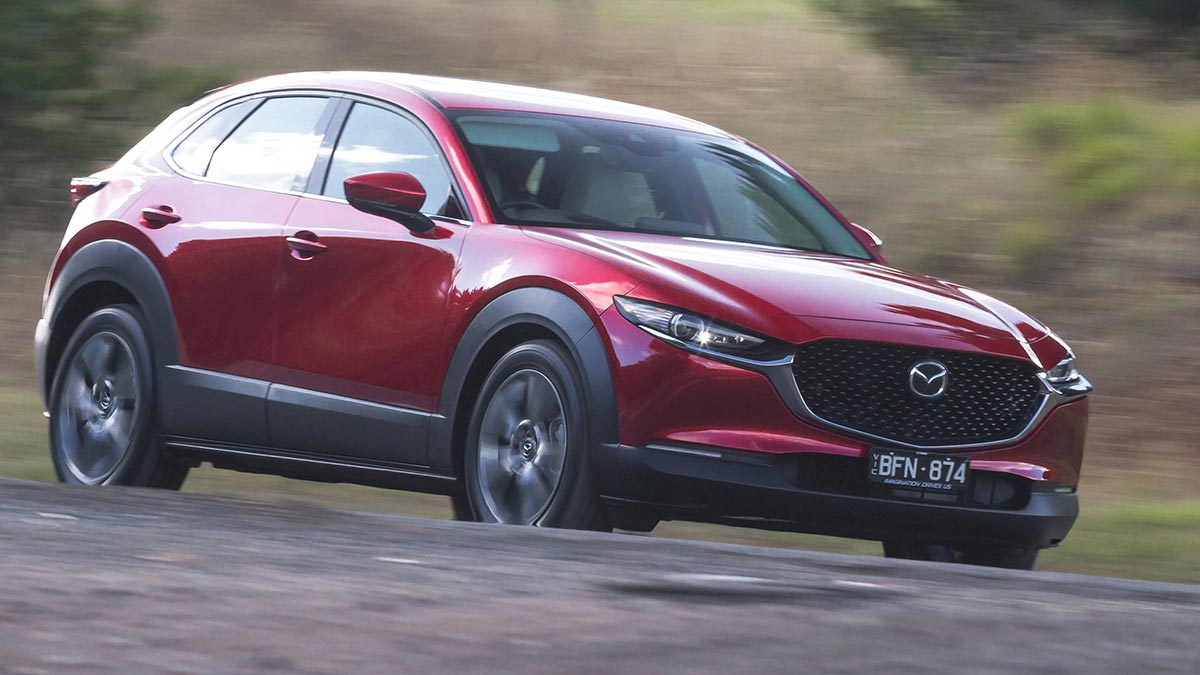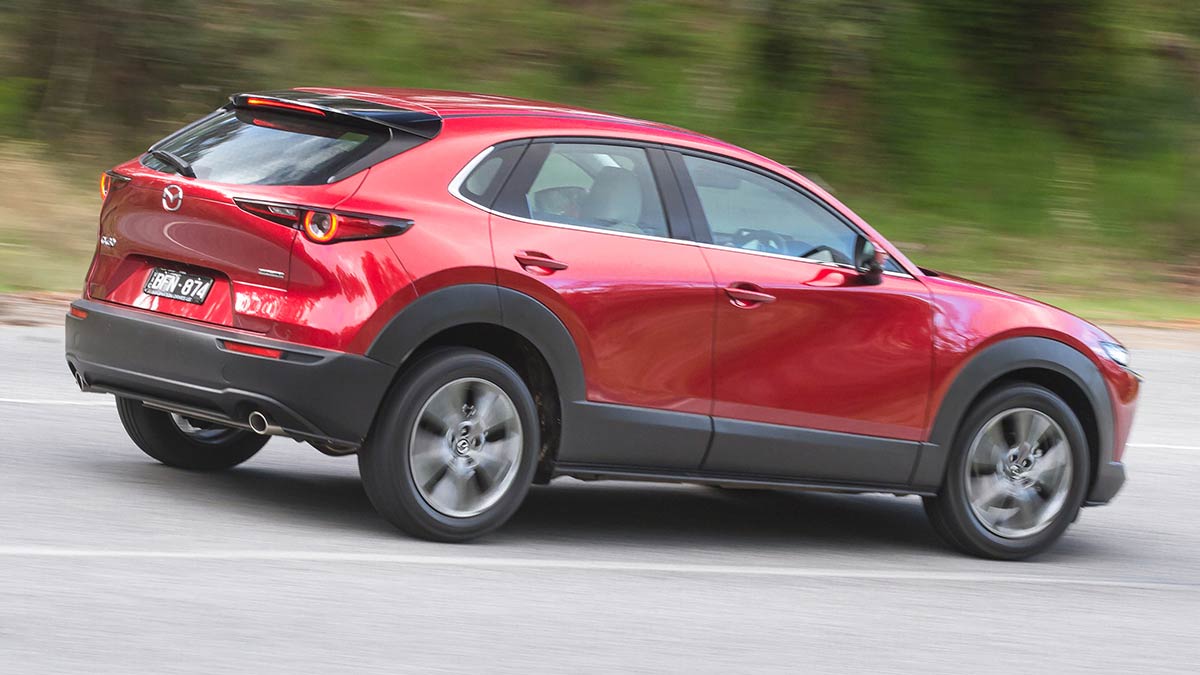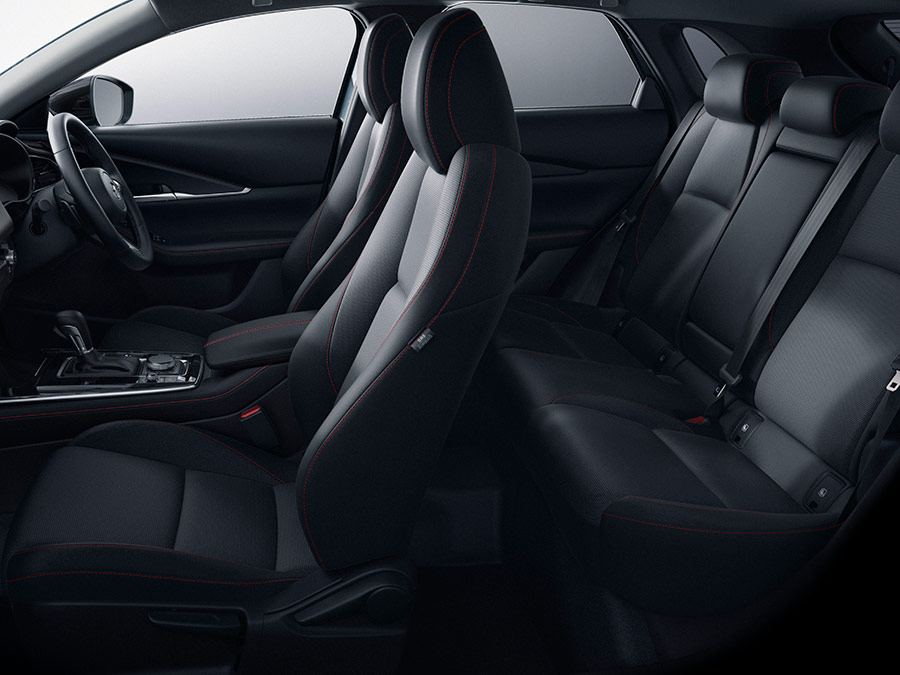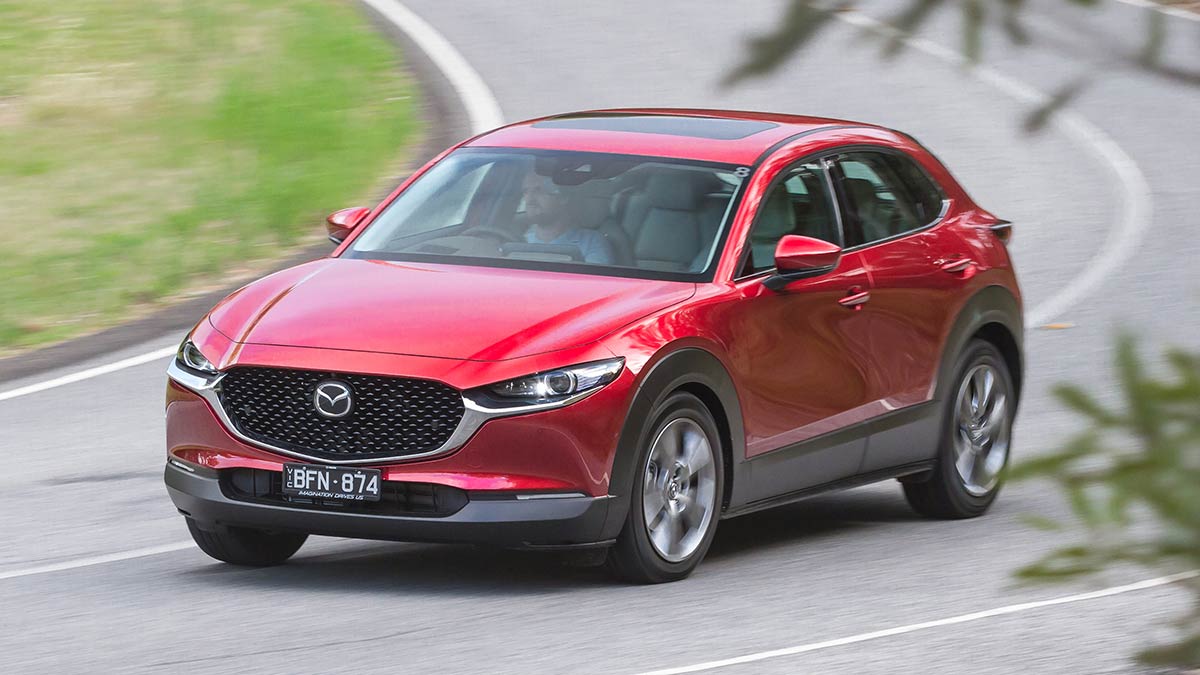The ninth-generation Toyota HiLux has arrived, bringing with it a futuristic forward exterior design, more safety and tech and the same rugged capability owners love. Will the updates tempt private buyers away from the Ford Ranger or are they just enough to keep fleets onside?
2022 Mazda CX-30 G20E Evolve hybrid road test review

The CX-30 is the sweet-spot in the Mazda range, and the small SUV is the brand’s best-seller for a reason - taking on the Kia Seltos and MG ZS.
Mazda’s CX-30 buyers are spoiled for choice, which is a major reason for the small SUV being the best-selling vehicle in the company’s range.
It recently outsold the BT-50 ute by a comfortable margin (1,819 to 1,628 sales) and was well ahead of the Mazda CX-5 mid-sized SUV and Mazda3 passenger car. The only vehicle to beat it in its class was the MG ZS.
Put that popularity down to the styling and the choice of three powertrains that cater for most potential owners.
On this page
- How much does the Mazda CX-30 cost?
- How safe is it?
- What's it like inside?
- What's under the bonnet?
- Is it efficient?
- How does it drive?
- Should I buy one?
How much does the Mazda CX-30 cost?
Recommended driveaway prices for a Melbourne-based buyer of the CX-30 start at $33,483 and extend to $52,859. The price of the Mazda CX-30 G20e Evolve is $40,204 out of the dealership door.
The nearest competitor is the Kia Niro hybrid, which costs $41,990 driveaway in the Melbourne metro area.
Service intervals for the Mazda are 12 months/10,000km. That’s below the industry average of 15,000km but typical for a Mazda product. Servicing costs over the five-year warranty period are $1670 or $334 a year.
How safe is the Mazda CX-30?
ANCAP rates the CX-30 highly across the four testing criteria.
The SUV scored 99 per cent for adult occupant protection and 88 per cent for child occupant protection, with the only criticism coming in the form of a marginal rating for the 10-year-old dummy in the frontal offset test.
Vulnerable road user protection was judged to be 80 per cent, with the autonomous emergency braking systems of pedestrians and cyclists deemed weak or poor in some night-time tests.
The safety assist suite earned a 76 per cent score. ANCAP notes “tests of LSS (lane support system) functionality showed some good performance, however the system does not intervene in more critical emergency lane keeping test scenarios”.
What’s the Mazda CX-30 like inside?
The Mazda’s interior isn’t the brightest in the segment, but it is built with decent materials. There are soft-touch surfaces on the key contact points, the seven-inch digital driver’s display is well presented and the head-up display is a welcome addition at this price point.
The 8.8-inch infotainment display isn’t a touchscreen. Instead, it is operated using a rotary dial. It saves fingerprint smudges on the screen, but younger owners would probably prefer the convenience of a capacitive screen, even if only used occasionally.
Satellite navigation is standard, along with smartphone mirroring, digital radio and an eight-speaker sound system.
The driver’s seat is powered and there’s a 360-degree camera, enhanced AEB functions and adaptive cruise control as part of the default “Vision Tec” equipment that is a $1,500 option on lower-spec versions.
The dual-zone airconditioning is quick to cool the SUV down on a warm day, and it pumps that air into the rear via vents mounted at the back of the centre console.
Parents should note there are no USB ports down the back, though there are a pair up front. The rear seats are comfortable, though tall adults may find their hair brushing the roof-liner.
The outer-rear seats have isofix mounts for child capsules and all three back seats have top-tether anchors.
Boot space is a small-for-the-segment 317 litres. It’ll do to grab the weekly groceries but don’t expect to pack luggage for an extended vacation unless you drop at least one of the rear seats. There’s also a space-saver spare hidden under the boot floor.
What’s under the bonnet of the Mazda CX-30?
The CX-30 can be had with either 2.0-litre or 2.5-litre four-cylinder engines. The mild hybrid we’re testing uses the 2.0-litre mill and couples it with a 24-volt electrical system incorporating an integrated starter-generator.
That basically smooths out the auto stop-start activities as well as providing a mild boost of kick off the line.
It’s worth noting Mazda still quotes outputs as 114kW/200Nm, which is the same as the regular petrol versions, meaning the hybrid shove tapers off fairly quickly before the engine reaches its peak figures.
Is the Mazda CX-30 efficient?
Mazda says the G20e Evolve’s combined fuel use of 6.3 litres/100km shaves 0.2 litres off the regular 2.0-litre petrol versions. More significantly, it's claimed 7.0 litres/100km fuel use around town is a litre better than the purely internal combustion variant.
Just to complicate things, there is also a mild hybrid all-wheel-drive CX-30. Dubbed the X20 Astina, it is powered by Mazda’s clever compression-ignition 2.0-litre engine and is more fuel-efficient still. It also costs almost $53,000.
How does the Mazda CX-30 drive?
Capability on the road has been part of Mazda’s forte in recent years. The CX-30 follows the same pattern.
Yes, the suspension is relatively rudimentary, being based on a torsion beam rear end. Mazda has managed to tune that into a reasonably-sophisticated system that doesn’t kick when hitting big obstacles, potholes, or corrugations mid-corner and still hold its line.
It is also reasonably composed over urban obstacles such as speed humps. The ride is on the firm side without being harsh.
The steering is direct and provides decent feedback for an SUV and it will quite happily tackle a twist road and leave the driver feeling confident and composed.
That’s a bonus in a class where a relative high ride-height and the ability to carry four people in comfort are the default parameters.
A 180mm ground clearance gives it decent off-road ability, though that’s probably the domain of the AWD versions, and it has a braked towing capacity of 1200kg - more than enough for most trailers and smaller boats.
Should I buy one?
The CX-30 is the second best-selling vehicle in the small SUV class due to its combination of looks and value for money.
It’s not sitting at such a high price-point like the MG, but it is loaded with features owners will appreciate, wrapped in an exterior and interior style that is far more premium than many competitors in the segment. Take it for a spin.
The information provided is general advice only. Before making any decisions please consider your own circumstances and the Product Disclosure Statement and Target Market Determinations. For copies, visit racv.com.au. As distributor, RACV Insurance Services Pty Ltd AFS Licence No. 230039 receives commission for each policy sold or renewed. Product(s) issued by Insurance Manufacturers of Australia ABN 93 004 208 084 AFS Licence No. 227678.








